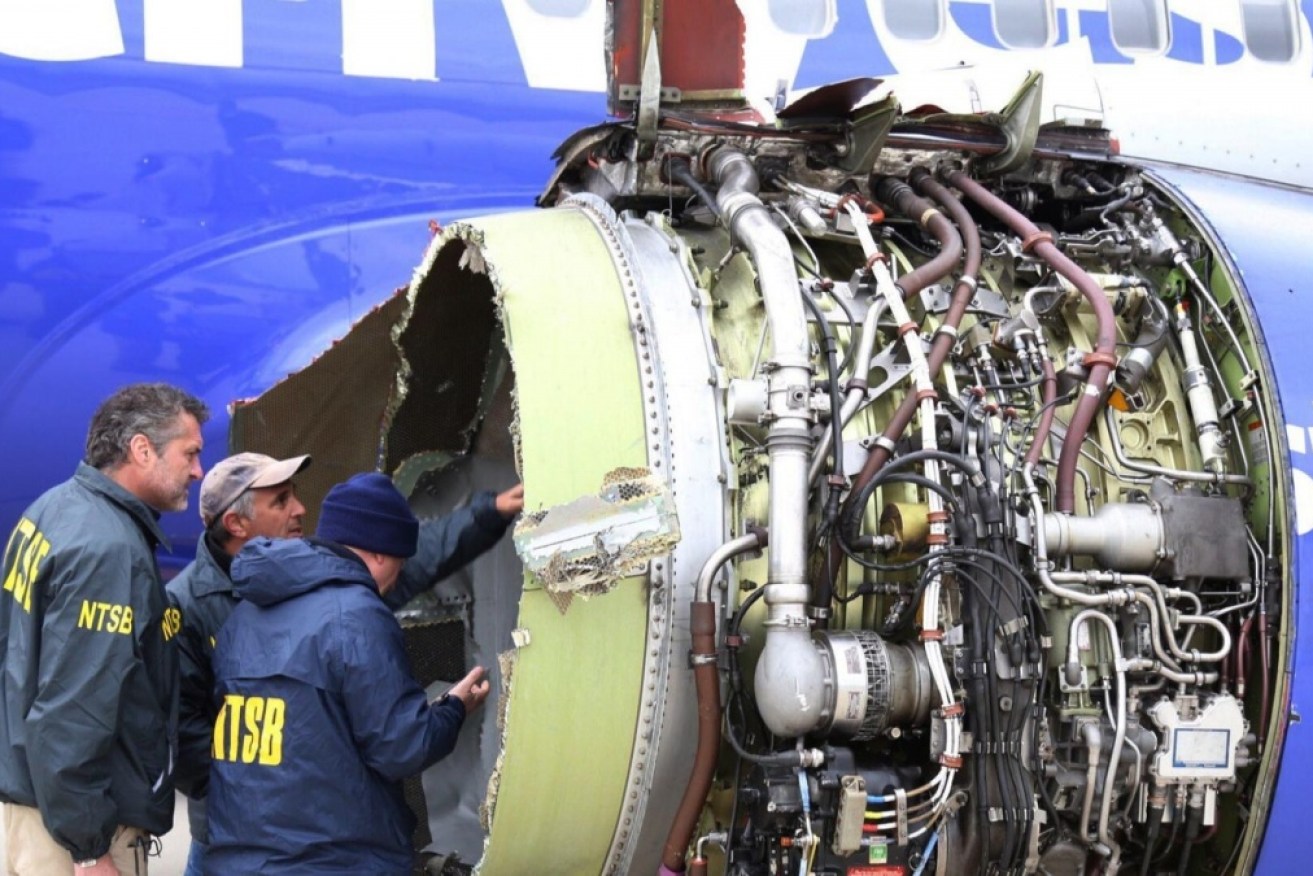The physics of getting sucked out of a plane

Investigators believe one of the engine's spinning blades snapped off. Photo: NTSB
The death of an American woman who was partially sucked out of a plane at 30,000 feet has stunned the world’s flyers, frequent or otherwise.
Philadelphia’s medical examiner said Jennifer Riordan, 43, died of blunt impact trauma to her head, neck and torso on a Southwest Airlines flight from New York to Dallas on Tuesday.
So how can someone get sucked part-way out of a plane? And what causes such severe trauma?
What happened?
Ms Riordan was killed and seven others were injured when the Boeing 737 blew an engine at 30,000 feet.
Jennifer Riordan was sitting next to the window and had her seatbelt on. She was wearing a seatbelt and sitting next to a window.

Jennifer Riordan, of Albuquerque, was a bank executive killed on a Southwest Airlines jet that blew an engine. Photo: AAP
Professor Nick Hutchins, who works in the mechanical engineering department at the University of Melbourne, says shrapnel from the explosion hit the aircraft’s main cabin
“Something was ejected from the engine that pierced the fuselage,” he told ABC Radio Melbourne’s Rafael Epstein.
“It seemed to pierce the window of the fuselage.”
It’s related to air pressure
Professor Hutchins says as you move to higher altitudes, “the atmosphere becomes lower and lower”.
“To compensate for this, the fuselage of the aircraft is maintained at a higher pressure so the passengers basically face no ill-effects from altitude sickness.
“So the pressure inside the aircraft fuselage is greater than the pressure outside the aircraft fuselage.”
If there is a depressurisation above 10,000 feet, oxygen masks are deployed with enough supply for crew and passengers until the pilots fly the plane to a safe altitude.
Think of it like a balloon
“If a hole forms [in the fuselage], I guess much like a balloon, that high-pressure air is going to want to expel through that hole to equalise the pressure.”
Professor Hutchins says the initial force created by the pressure difference would have been “terrifyingly large”.
“In this case, where you have a reasonably large-area hole which is the broken window, the velocity of the air moving through that hole is going to be, initially, extremely high.

A blown out window taken from inside the Southwest Airlines plane. Photo: AAP
“The force that is acting on somebody who is unfortunate enough to be close to that hole in the aircraft would be terrifyingly large.”
Strong enough to suck an adult out of the plane?
On this question, the professor didn’t miss a beat.
“For sure.”
And this is where the physics kicks in.
“The force is pressure [multiplied by] the area. The pressure difference is large and the area is large so the force would be enormous.”
Has this happened before?
Yes, it has, but Professor Hutchins says it is “extremely, extremely rare”.
“Certainly there has been more catastrophic holes that have formed in aircraft at times and people have been sucked out before.
“It’s often flight crew because they’re not strapped in and they’re walking around.
“I can only imagine – I don’t want to imagine – what it would be like to be half in and half out of an aircraft that was flying at cruise speed [about 800kph] and cruise altitude.”








